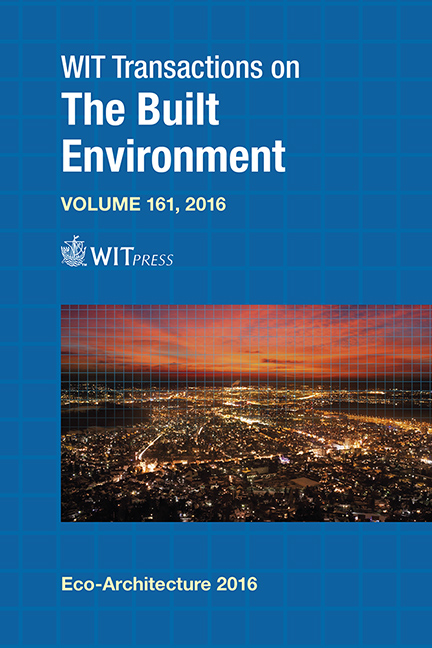Intelligent, Parametrically Sustainable Architectural Design
Price
Free (open access)
Transaction
Volume
161
Pages
13
Page Range
93 - 105
Published
2016
Paper DOI
10.2495/ARC160091
Copyright
WIT Press
Author(s)
V. Vermesan, U. P. Flueckiger
Abstract
Retrofitting the many unsustainable built environments created in recent decades is a pressing urban and suburban design challenge, with sustainable architecture seemingly a common thread. Parametric and generative design is considered a current trend in architectural design. The aim of this paper is to investigate the potential for applying parametric design during the early conceptual stages, in which architecture and urban design overlap, in order to achieve a sustainable style of design. Using a parametric model, the evolutionary process can be accelerated by computer algorithms, allowing many more otherwise expensive and time-consuming variants and evaluation criteria to be considered, as well as offering more creative solutions to design challenges that are too complex to be solved by human intuition. We advocate the concept that comfort, in terms of environmental conditions, is an objective worth pursuing for suburbs everywhere, while designing in partnership with nature helps to address this quality of life factor, which is otherwise difficult to measure. A suburban area in Amarillo, West Texas, was selected as the case study location because it is representative by being rich in architecture and natural resources, while Amarillo and the surroundings have also undergone some urban and suburban transformations in the past. Intelligent parametrically sustainable design involves replicating the principles found in nature in order to create interaction between it and the built environment, with the aiming of finding the optimum solution through parametric modelling, analysis, simulation and optimization, and ultimately with the intention of assisting architects in the decision-making process.
Keywords
parametric design, suburbs, eco-sustainable architecture, differentiation, evolutionary design, optimization





